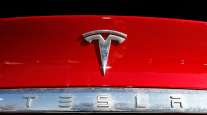Analysis: Driverless Cars Could Save American Lives

The London Assembly’s Transport Committee reported on the city’s approaches to new transportation technologies, concluding that connected and autonomous cars “won’t be on the road until the 2030s at least.” That’s a long wait for many who hope autonomous vehicles will make roads safer, but the cars could arrive far earlier somewhere else: the rural U.S. And when they do, the benefits will be immediate.
The deadliest state for road crashes in 2015 was Wyoming, with nearly 25 deaths per 100,000 people, according to the University of Michigan Transportation Research Institute. The safest was the District of Columbia, with only 3.4 deaths per 100,000 people.
RELATED: Autonomous cars may cut workplace deaths, official says
Wyoming has the dubious distinction of being the top state for both miles driven and number of fatalities per capita. The second- and third-most deadly states for driving, Mississippi and Montana, are also in the top 10 for miles driven. Of the 10 states where people drive the most per capita, six are also in the top 10 for road fatalities.
On a population-weighted basis, driving is deadliest in large states with relatively few people. Meanwhile, cities have an increasing number of options for getting around, in particular ride-hailing services such as Uber and Lyft.
RELATED: Uber steps up driverless-cars push with deal for 24,000 Volvos
Such services not only offer transportation for the less able but also keep impaired drivers off the road: A 2017 study from the UC Davis Institute of Transportation Studies found that avoiding getting behind the wheel while under the influence of alcohol is a top reason that both urban and suburban passengers use ride-hailing services. Satisfying that need is quite easy in Los Angeles; it is much harder in Wyoming (though Uber does have a presence in its more populated areas).
It’s just one more reason to automate country driving first. For a machine, navigating a city, a suburb or even a cul-de-sac has ample technical challenges. Maintaining a lane on a ribbon of empty blacktop in a rural area is far easier, and many vehicles are already capable of maintaining distances from other vehicles, staying in lanes and obeying posted speed limits.
Automating all but the first and last miles of long-haul driving in the least-safe driving states could provide a benefit to public health as great as fighting major diseases.




